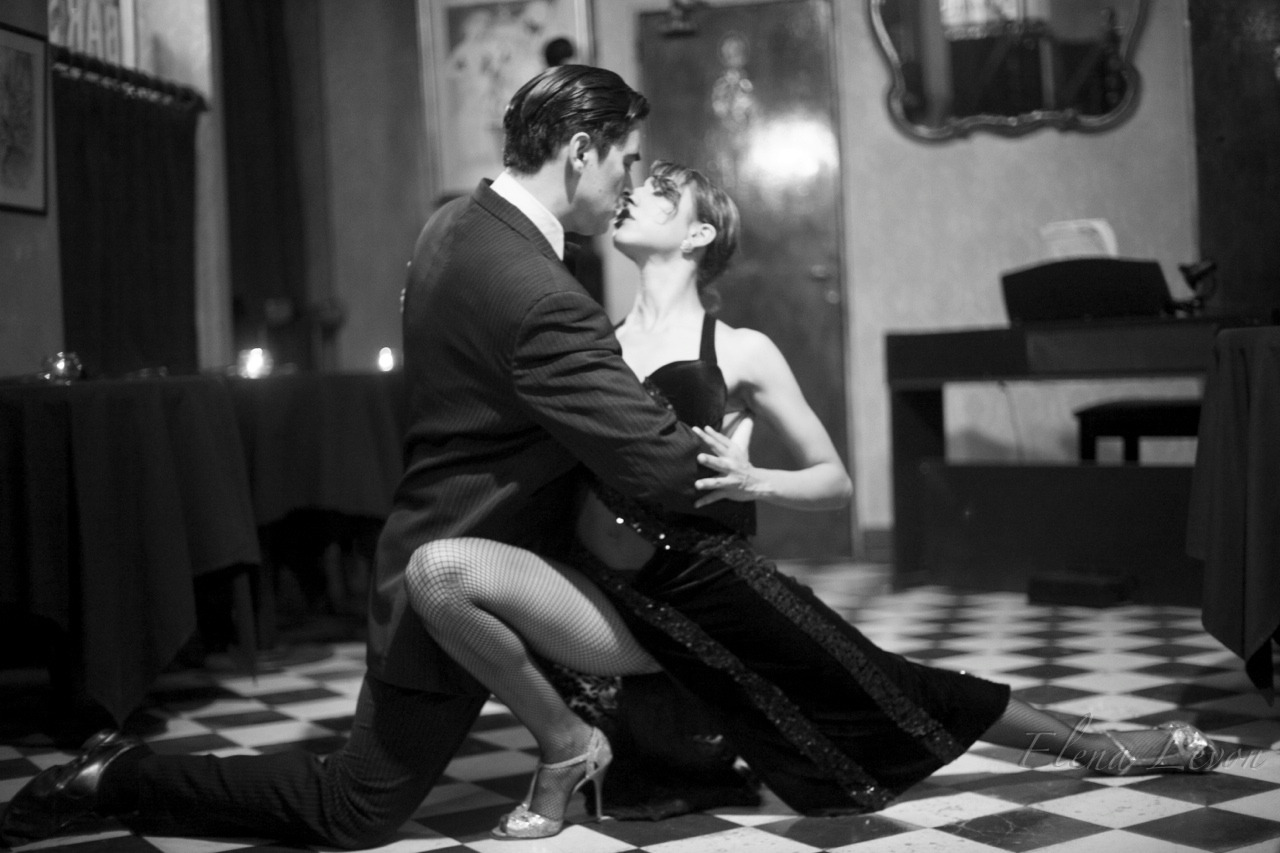Canyengue has the following attributes:
- The lead and follower have bent knees.
- The Canyengue is extremely playful and charismatic - often described as "incisive, exciting and provocative"; in the old guard of tango, it was said that the dancers had the 'Canyenguero mice' in their feet.
- A characteristic is for the dancers to quite often walk together side-by-side or forwards.
- Generally danced in close embrace, in a V-offset.
- Both lead and follower share one axis.
- Dancing is done with firm contact on the ground. Steps are small, historically limited by the tight fit of the women's dresses around the 1900s.
- Canyengue makes significant use of the cortes, or stops - accentuated by the knees being bent. This is combined with a steady on-off beat (2/4) of dancing.
- Another feature of the Canyengue is the corrida: small, quick steps to a run or almost run.
- The joints from the waist up (shoulder, elbow and head) are much more mobile than normal tango, called body dissociation.
- The spine is slightly soft, not rigid.
- Contact is maintained chest to chest.
- The follower is significantly offset to the lead's right, with the lead's right cheek in contact with the follower's left cheek.
- The man's embrace is low compared to the woman's: The lead has his arm around just above the waist whereas the follower has her arm over the man’s shoulder.
- Generally the cruzada is absent.
- The contacting hands are often seen extremely low compared to other styles
